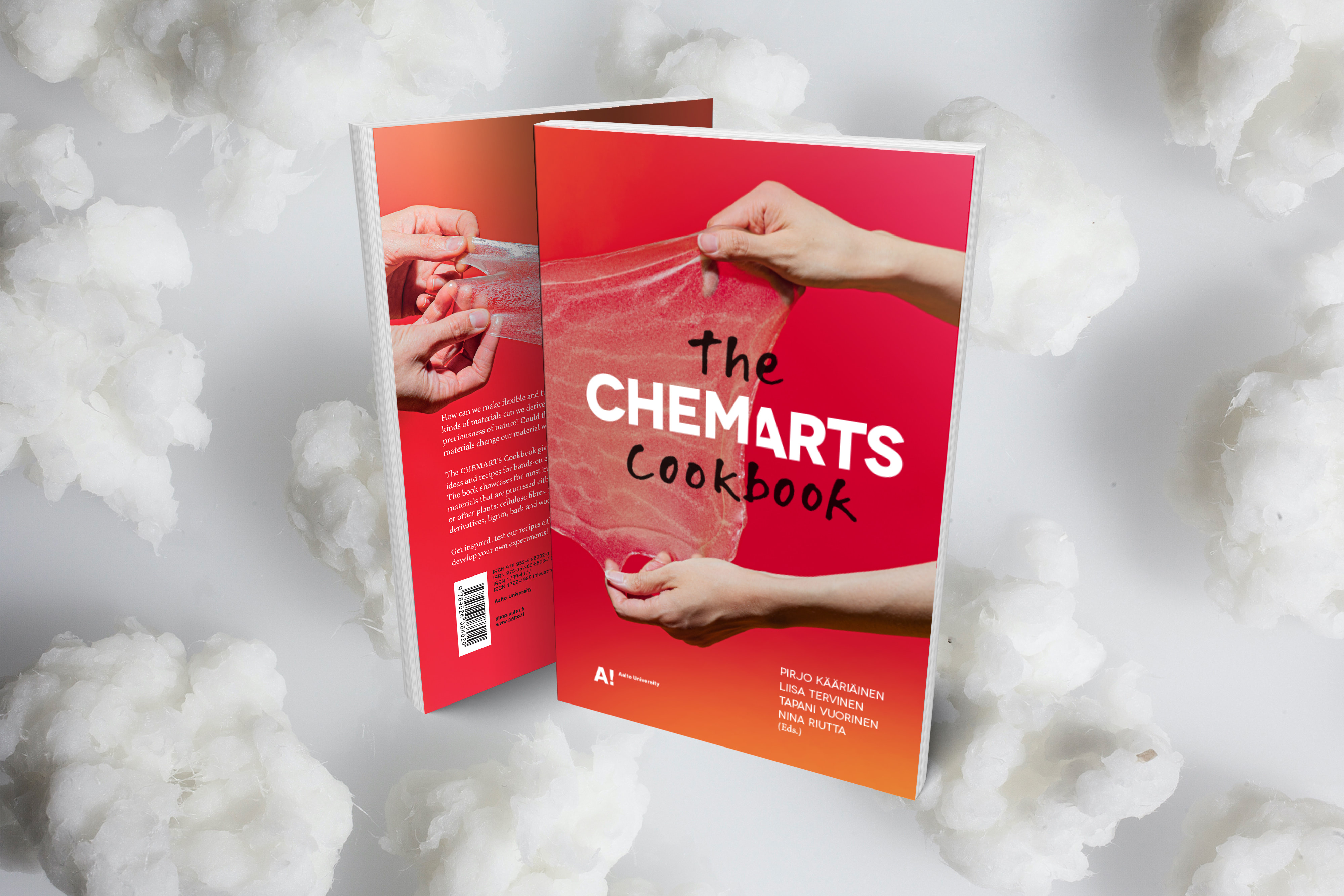In the coming years, our material world will change dramatically. In parallel with climate change, our lifestyles will also change. It is becoming increasingly important to ask the following questions: How can we make flexible and transparent wood-based materials? What kinds of materials can we derive from trees, while still respecting the preciousness of nature? Could the innovative use of renewable cellulosic materials change our material world?
The good news is that the awareness of ecological issues is increasing, actions such as recycling are becoming part of our everyday routines, and materials now play a role in several United Nations Sustainable Development Goals. Renewable raw material sources and unused side streams or waste are being researched around the globe. More and more designers and other creative minds are becoming engaged in innovative material research and development processes, together with scientists and engineers. The CHEMARTS team is a part of this movement.
CHEMARTS is a long-term strategic collaboration between two Aalto University schools, The School of Chemical Engineering (CHEM) and The School of Arts, Design and Architecture (ARTS). The schools merged their forces with the aim to invent new ways to harness wood and cellulose. The idea is to research the performance and design of advanced cellulosic materials for innovative uses.
The CHEMARTS Cookbook then, gives both simple and more advanced ideas and recipes for hands-on experiments with wood-based materials. The book showcases the most interesting explorations focusing on raw materials that are processed either chemically or mechanically from trees or other plants: cellulose fibres, micro- or nano-structured fibrils, cellulose derivatives, lignin, bark and wood extractives.
Get your physical or digital copy of the cookbook via this link.

Hendrick Marvel
I wanted and fought very hard to win the lottery that didn't come to pass until I found out about Dr Ozigidon Lottery spell. Dr Ozigidon is the real deal. My name is Hendrick Marvel, I'm from Ohio United states. I just want everyone to know about Dr Ozigidon, he helped me win a lot of money sometimes ago in lottery, I have played a couple of times and I have never won , I contacted him after watching a video of how he cure a woman of a deadly sickness. I told him I want to win the lottery and become rich to clear the debt I owe. He said if you can pay for the spell before the next draw, then consider yourself a millionaire. I had to loan money from a colleague to get the spell done. He gave me some lucky winning numbers, and he also instructed me on how to go about it, i played and i won $33,750,000 THIRTY-THREE MILLION, SEVEN HUNDRED, FIFTY THOUSAND DOLLARS, I have never seen such money all my life, but with the help of Dr Ozigidon, now I have that much, if you ever need help in getting lottery winning numbers to enable you win much money to pay for anything you wish for in life., do not hesitate to contact Dr Ozigidon, he did the unthinkable for me. contact him via his Email: drozigidonhenz.spell.net@gmail.com Whats , App. him now +2349054750112
Posted on